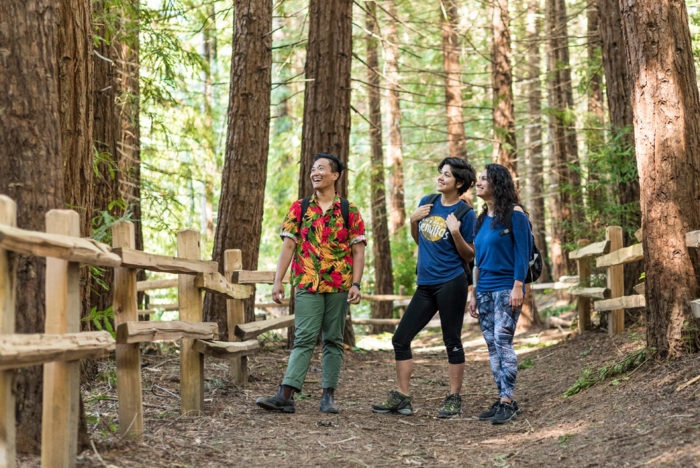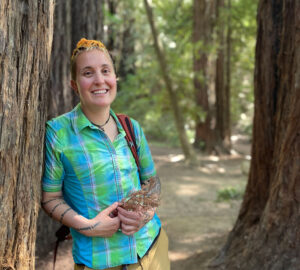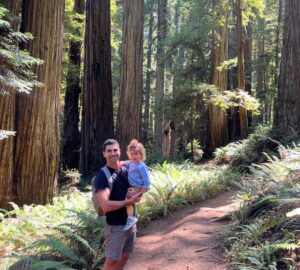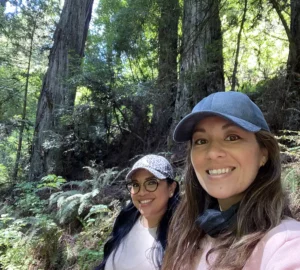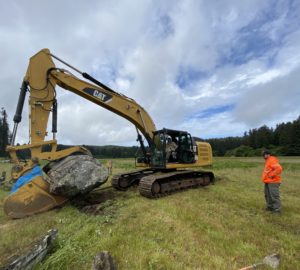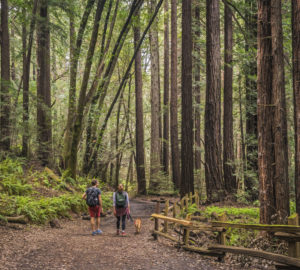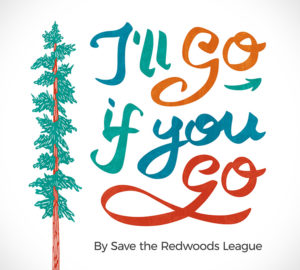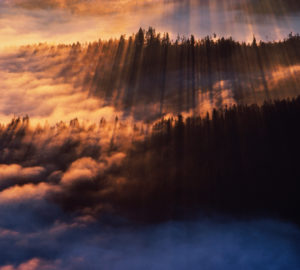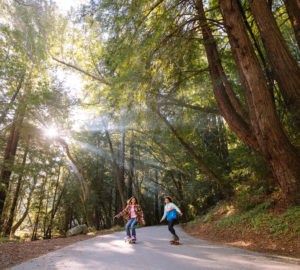REDWOODS magazine: This article was created for our magazine that features redwoods news, breathtaking photos, answers to readers’ questions, stories of how we are realizing our vision for our next century, and how you can help the forest.
Community Voices is a series in which guest writers share their perspectives on redwood forests.
More people of color and people from low-income communities should have the opportunity to feel nature’s magic near their homes.
Five months after moving to Oakland, when my family visited for Thanksgiving, they agreed to hike with me in Redwood Regional Park. I didn’t take moments like this for granted. As I had written about before their visit, growing up, I had believed hiking was a “white people thing” and had difficulty relating “outdoorsy culture” to my Latino family’s experience.
On that hike, I remember the moment we found ourselves in an open area surrounded by giant redwoods, the gold afternoon light glowing through their leaves. My whole family stopped and looked up. For a minute, we stood there, necks stretched, saying nothing. I couldn’t remember the last time my family stood in awe that way, so taken by nature that it drove us to silence.
Moments like these made a difference. By sharing Redwood Regional Park with family members and later, other friends of color, it became the space where my Latino identity and my outdoorsiness started finally coming together, the space where the outdoors also began to feel culturally like home.
As someone without a car, I also couldn’t believe a place so beautiful was so easily accessible using Oakland public transportation, or a mere 15-minute taxi ride from my house.
But unfortunately, most people of color and people from low-income communities do not have that same opportunity. According to a 2016 study by the Center for American Progress in 11 western states, more than 80 percent of these communities lived in areas with fewer natural spaces than the state average.
In the environmental movement, advocates often say, “Our public lands belong to everyone.” But when marginalized people cannot access natural spaces, those statements ring hollow. People shouldn’t have to search outside their community to find magic outside. They should be able to find that magic within their own communities, so it becomes clear that natural spaces belong to them too.
I hope the environmental movement can focus on giving more people of color and people from low-income communities the opportunity to fall in love with nature, to live near a natural space that feels sacred to them in a way that moves them to defend it, and to experience magic outside in a place that feels like home.
LEARN MORE
Enjoy Oakland’s redwoods. Read “Redwoods in the City” in this magazine.
